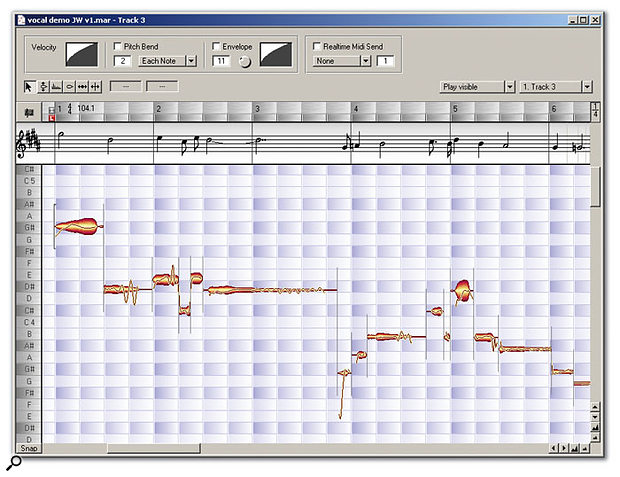

It's also possible to split notes and then treat them separately, thereby making it possible to change their pitch and create a new part.

If a note blends into another, lengthening one note will shorten the other to maintain fluidity. If you find that notes are the wrong length, simply drag the end of a blob in either direction. Out-of-tune notes can either be shifted by whole semitones or, by holding the Alt key, in fine increments. Loading some deliberately out-of-tune and badly played arpeggiated guitar, we were able to get right in there and repair timing as well as tuning. Straying too far from the original pitch, as you would expect, makes things sound a little unnatural, but there's a formant-changing tool to help out. No glitches, no nasty overtones, it just sounds like you've played an E major in the first place! Changing a whole chord is just as easy, select all the necessary notes and move them to a new key. Now the fun starts! Want to make that E minor a major? No problem, just move the G up to a G#. It's amazing to suddenly see all the notes appear once Melodyne has done its magic. We started by loading in some guitar strums. In most of our trials, Melodyne coped admirably with the minimum of tweaking needed. It's not always perfect, particularly if the content is complex, so there's a slider available that will reveal more choices that can be individually turned on or off if you find you're missing something.


 0 kommentar(er)
0 kommentar(er)
